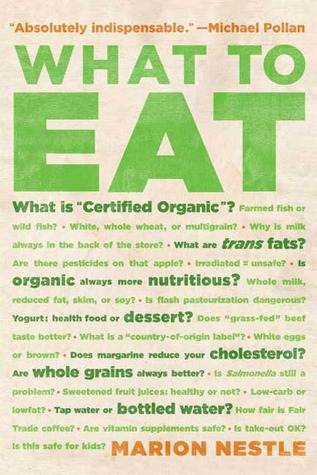
What to Eat
کتاب های مرتبط
- اطلاعات
- نقد و بررسی
- دیدگاه کاربران
نقد و بررسی

March 13, 2006
According to nutritionist Nestle (Food Politics
), the increasing confusion among the general public about what to eat comes from two sources: experts who fail to create a holistic view by isolating food components and health issues, and a food industry that markets items on the basis of profits alone. She suggests that, often, research findings are deliberately obscure to placate special interests. Nestle says that simple, common-sense guidelines available decades ago still hold true: consume fewer calories, exercise more, eat more fruits and vegetables and, for today's consumers, less junk food. The key to eating well, Nestle advises, is to learn to navigate through the aisles (and thousands of items) in large supermarkets. To that end, she gives readers a virtual tour, highlighting the main concerns of each food group, including baby, health and prepared foods, and supplements. Nestle's prose is informative and entertaining; she takes on the role of detective, searching for clues to the puzzle of healthy and satisfying nutrition. Her intelligent and reassuring approach will likely make readers venture more confidently through the jungle of today's super-sized stores.

March 1, 2006
Because the American food industry produces hundreds of thousands of products, consumers face a bewildering array in the average supermarket. Maintaining that the shopper -s quest for healthy products conflicts with the seller -s focus on marketing, Nestle (nutrition, NYU; "Food Politics" assists the public in making informed choices. Besides reviewing the nutrition basics of obesity, organics, genetically modified food, and other topics, she decries tiny food labels, inadequate government regulations, and nutrition gimmicks. Foods are discussed in the order in which one finds it in a typical supermarket. Quite a few titles, e.g., Joy Bauer -s "The Complete Idiot -s Guide to Total Nutrition" deal with various aspects of eating well; however, this book is the only one that discusses the impact of marketing on buyer choices. The amount of information can be overwhelming, despite the lucid prose, but Nestle -s informed, unique perspective and credentials -she won a Lifetime Achievement Award from the James Beard Foundation and appeared in the documentary "Super Size Me" will drive demand in consumer health collections. [See Prepub Alert, "LJ"1/06.]" -Margaret K. Norden, Marymount Univ. Lib., Arlington, VA"
Copyright 2006 Library Journal, LLC Used with permission.

April 15, 2006
Nutritionist Nestle's newest volume aims to help the American consumer determine what best to eat to improve or to maintain good health. Pursuing what she hopes is a unique and beneficial approach, she surveys a supermarket on a food-by-food basis, noting for each category what nutritional benefits are claimed and what really are the advantages and dangers in consuming any grocery offering. She documents how food industry concerns have perverted nutritional and origin labeling, dismayed that economics has once more trumped open information. She assesses the roles of trans-fats in processed food, methylmercury in fish, calcium in dairy products, salmonella in fresh eggs, sugar in cereals, and genetic modification. Nestle is particularly concerned that consumers understand all the implications, good and bad, of the perennially contentious "organic" label. Although the honest, prudent scientist in Nestle precludes her providing glib prescriptions or half-true advice on eating, she does present very helpful shopping guidelines for consumers determined to be vigilant about their food.(Reprinted with permission of Booklist, copyright 2006, American Library Association.)

























دیدگاه کاربران